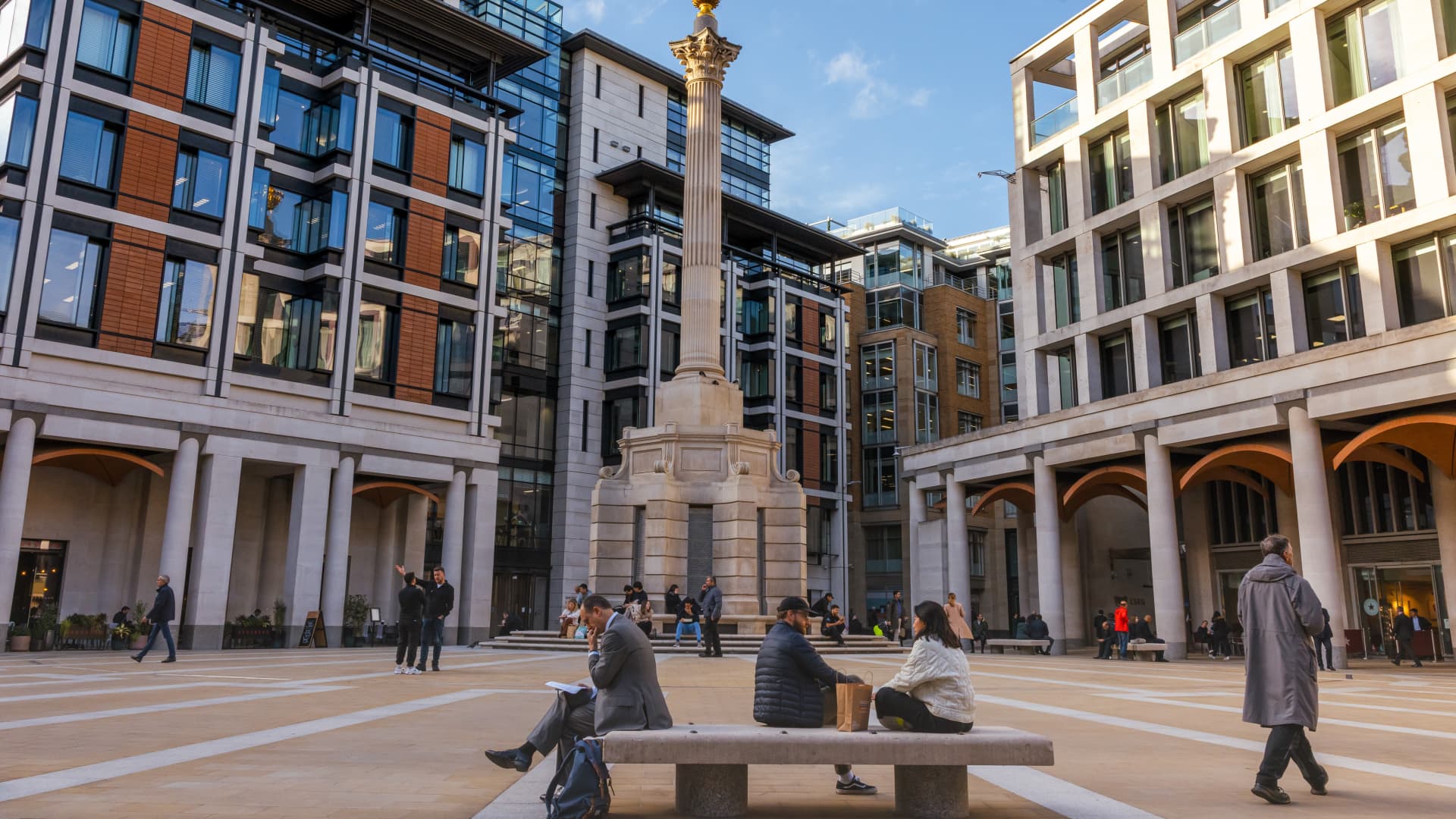London’s biggest stocks have outperformed most of Wall Street’s major averages this year — and as the benchmark FTSE 100 index edges toward an historic milestone, market watchers say its rally could have further to run. The FTSE 100 index — home to the U.K.’s most valuable blue-chip companies — hit a record high of 9,930 points last week. Since then, a sell-off of global stocks , fueled by mounting concerns about AI valuations, has dragged the FTSE 100 below the 9,700 level. .FTSE YTD line FTSE 100 index Still, the index is only around 3% off of the 10,000-point threshold, and with a year-to-date gain of around 17%, it has outperformed both the S & P 500 and the Dow Jones Industrial Average . “The FTSE 100 is within a whisker of hitting 10,000 and it could only be a matter of days or hours before reaching this triumphant level,” Dan Coatsworth, head of markets at AJ Bell, said in a Nov. 11 note. While the actual milestone itself might not be particularly significant, Coatsworth pointed out that the speed at which the index was moving between 1,000-point increments was worth noting. “It’s only been 119 days since the FTSE 100 hit 9,000, so exceeding 10,000 before the end of 2025 would make it a record breaker,” he said. “Previously, the fastest jump in blocks of 1,000 happened when the FTSE 100 went from 5,000 to 6,000 which took 229 days in the late 90s.” The U.K. index, home to a number of mining giants, has benefited this year from the rising price of gold, and also a broad diversification away from U.S.-heavy equity portfolios . A strong presence of utilities firms, often seen as stable investments in times of market volatility, and a European commitment to splurge on defense , have also helped lift the FTSE 100 higher over the course of the year. Respite for Reeves? As the FTSE 100 hovers close to the 10,000-point milestone, Coatsworth pointed out that crossing that threshold could be “a symbolic moment for the market and Chancellor Rachel Reeves.” U.K. Finance Minister Reeves is due to deliver her critical Autumn Budget on Nov. 26 , and is likely to make some unpopular choices in terms of fiscal policy updates as she seeks to balance the public finances. Last week, bond markets reacted negatively to reports that Reeves had U-turned on planned income tax hikes which would have landed badly with the electorate but appeased financial markets. Read more UK’s Reeves walks a Budget tightrope, as money markets eye unpopular choices Op-ed: The UK government’s alphabet tax tango: From U-Turn to W-turn to doughnuts The UK government won’t admit it, but tax rises are coming — and there are no good options “Rachel Reeves would love the FTSE 100 to hit the magic 10,000 level before the Budget, so she can use the achievement to help back her campaign to get more people invested in U.K. assets,” Coatsworth said. “There needs to be some good news hook for the Budget, as all signs point towards more ‘difficult decisions’ by the Chancellor on the day.” Toni Meadows, head of investment at BRI Wealth Management, agreed that the speed of the FTSE 100’s rise toward the 10,000-point level was notable, but urged investor caution. “Passing any large round number on an index is psychologically important but the foundations for the move have to be solid for the new level to set a floor rather than act as a ceiling for the index,” he told CNBC in an email. Meadows also noted that if the Autumn Budget puts pressure on the British pound , FTSE 100 constituents — largely international firms — may see their earnings potential looking more attractive. However, he stressed the need to take a careful approach to trading the budget. “After a good run for the index, don’t look at what has already gone up,” he advised. “Wait for the budget dust to settle then revisit the housebuilders as they are unloved and on low valuations, even in a U.K. context, but would be the beneficiaries of future [Bank of England] rate cuts. There is a price for everything but be selective.” Luca Paolini, chief strategist at Pictet Asset Management, agreed that the FTSE 100 surpassing 10,000 points would not, in itself, be significant — but what it symbolizes is worth noting. “It shows that, in spite of all bad news coming from the U.K. , the U.K. market has performed much better than normally assumed — in fact, in sterling terms, it has performed in line with U.S. equities over the past five years at around 14% [growth per annum],” he said in an email. “We like U.K. equities because they are cheap (13X price/earnings ratio, lower than China and emerging markets) and are the best hedge against a ‘stagflationary’ shock to the global economy thanks to the high share of defensive value and commodity stocks.” BRI’s Meadows noted that there was value to be found in the U.K. market, which could be benefiting from investors looking to hedge against an AI bubble bursting. The FTSE 100, he noted, is largely comprised of traditional industries like banks, energy firms, healthcare stocks and other sectors that have more defensive qualities than tech-dominated U.S. indexes. “As the valuations of [tech stocks] rise, investors will fret about the timing of returns from the massive investment in artificial intelligence infrastructure by the tech giants that dominate the U.S. and global index,” he said. “So there comes a point where the ‘lowly’ valued ‘traditional’ stocks that dominate the U.K. market become more relatively attractive.”





